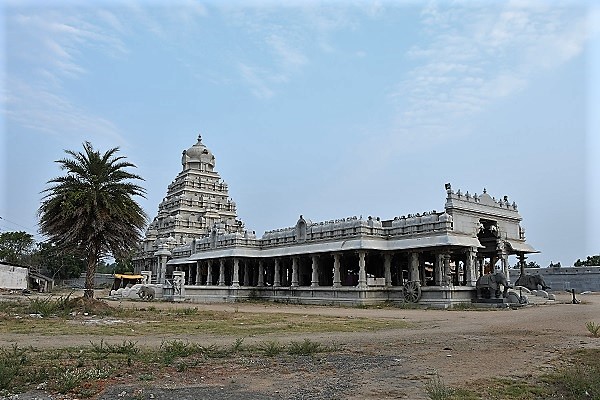
While performing Bhumi Pujan of the new Parliament building, Prime Minister Narendra Modi mentioned about a place known as Uthiramerur! What is so important for the PM to mention this?
There’s some very good information about the Democratic Processes in ancient Bharateeya cities and villages while Uthiramerur (Tamil Nadu) is a model of Democracy! It is situated in Kancheepuram District, about 90 kms from Chennai.
It has a 1,250-year-old history. There are three important Temples. The three Temples have a large number of inscriptions, notably those from the reigns of Raja Chola (985-1014 A.D.), his son Rajendra Chola, and the Vijayanagar Empire Krishnadeva Raya.
During the period of Parantaka Chola [907-955 A.D.] the village administration was honed into a perfect system, through elections by the people. In fact, inscriptions on Temple walls in several parts of Tamil Nadu refer to Village Assemblies.
“But it is at Uthiramerur on the walls of the Village Assembly (Mandapa) itself that we have the earliest inscriptions with complete information about how the elected Village Assembly functioned,” says R Sivanandam, epigraphist at the Tamil Nadu Department of Archaeology.
It testifies to the historical fact that nearly 1,100 years ago, a village had an elaborate and highly refined electoral system, and even a well written Constitution, prescribing the mode of Elections! The details of this system of elective Village Democracy are inscribed on the walls of the Village Assembly (Grama Sabha Mandapa), a rectangular structure made of granite slabs.
“It is an outstanding document in the history of India. It is a veritable well written Constitution of the Village Assembly that functioned 1,000 years ago,” says noted archaeologist Dr Nagaswamy.
The inscription gives astonishing details about the Constitution of Wards, the qualifications of candidates standing for Elections, the Disqualification norms, the mode of election, the constitution of Committees with elected members, the functions of those Committees, the power to remove the wrongdoer, etc. The villagers even had the Right to Recall the elected representatives, if they failed in their duties.
The village was divided into 30 Wards, with one representative elected for each! Those who want to contest must be above 35 years of age, and below 70. Only those who owned land that attracted tax could contest elections. Such owners should possess a house, built on a legally owned site (not on encroached public property).
A person serving in any of the Committees could not contest again for the next three terms, each term lasting a year. Elected members who accepted bribes, misappropriated others’ property, committed incest, or acted against the public interest, suffered disqualification. The entire village, including infants, had to be present at the Village Assembly Mandapa when elections were held. Only the sick and those who had gone on a pilgrimage were exempted.
T N Seshan, the former Election Commissioner was a bit dejected, when he was appointed as Chief Election Commissioner. He met Paramacharya, who was then 97. He immediately sensed the cause of his disappointment, and counselled him to treat the transfer as an opportunity granted by God to serve the Indian people. He suggested Seshan visit the Uthiramerur Temple and read through the details of Electoral Regulations prevalent in India about 1,000 years ago, including the qualifications of candidates who can contest elections.
In the words of Seshan, “The credit for Electoral reforms must go to Kanchi Mahaswami, but for whom this would not have been possible. At 97, He had such clarity of thought, that he could describe minute details of the electoral rules embossed on the northern walls of the Uthiramerur Temple.” He mentioned that even implementing a tenth of these reforms would be a great service to India.



